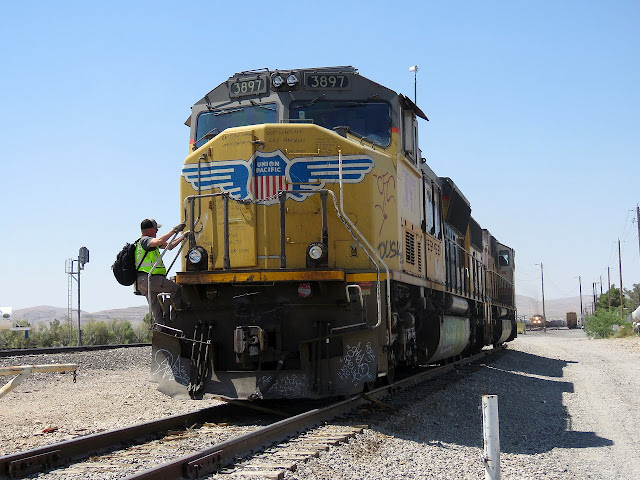Starting things off near the strip, here is the Vegas Monorail's Harrah's Station and adjacent Las Vegas Wheel. Although a person at the ticket window informed me that "There ain't no monorail and there never was", I did see people using the monorail ticket vending machines, so I assume its still in operation.
Since 2019 I somehow managed to stay in the two strip hotels that ended up being closed and demolished between then and the end of 2025, the Tropicana and the Mirage. Although I was not in the Mirage this time the writing was on the wall and I made sure to get one last photo.
I took my first side trip out to the Boulder Dam, although I did not have time to do the whole visitor centre thing.
South of the strip in Arden I encountered a rather sad pair of Union Pacific SD70MAC's, #3897 and #4302. Both were looking rather tired with #3897 heavily tagged with some indication it had come in from Loa Angeles.
As I was heading out a crew showed up to take the pair out on the road, which typically consists of mineral traffic to one of the area mines or quarries.
The last significant settlement in Nevada is the city of Pahrump which has both an air ambulance base and a ranch for VW Vanagons. The dry desert air does wonders for the preservation of motor vehicles and other historic artifacts as we will continue to see.
If you want to summarize Death Valley in two photos you get the sea level sign and the live temperature tote board at Furnace Creek. The reason that these below sea level places seem to be located in hot deserts is because without high levels of evaporation, deep valleys will fill up with water until it spills over the mountains and cuts a path to the sea. For example if Lake Superior hadn't filled up with water, the low point of its basin would be 600 feet below sea level. Death Valley has the capacity to evaporate 150 inches of water per year.
Historically the valley is known for its borax production, with the product being brought to the local railhead on road trains hauled by 20 mule teams. The first two cars would carry about 5 tones of borax crystals each, followed by as 1200 gallon water tender. Although 20 mule borax is still a well known brand today, the mule operation only lasted for about 6 years until replaced by the narrow gauge Death Valley Railroad. Remains of the harmony Borax works are one of the park's many attractions as the climate preserves both wood and metal.










